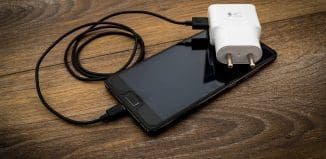Bionic Ears Provide Combat Advantage, Hearing Protection for the Warfighter
This post is also available in:  עברית (Hebrew)
עברית (Hebrew)

FBI Tactical team deployed to Boston, 2012. Team members’ kits include the C4OPS, to offer clear communications and hearing protection on assault operations.
Warfighters pay a high price for lack of auditory protection, but often they consider such price justified, for it keeps them sharp to react quickly and effectively, thus staying alive in combat. Beside the long-term effect suffered by the individual, implications of auditory damage effect on the team’s performance are also evident. Stunning effect of noise peaks in excess of 130db, often caused by explosions (friendly or hostile), severely degrade the team’s performance and expose the individuals to unnecessary risks. Defense-Update reports.

Auditory damage caused by blast effect
Source: Defense-Update
Auditory injuries are often caused by exposure to gunshots or explosions, particularly those experienced in close quarters and built-up areas or by IED blasts. When team members firing nearby, tank gun blasts, or explosive charges going off, warfighters experience excessive noises in combat, in situations they do not expect and therefore, cannot prepare for.

Two Air National Guard Combat Controllers wearing different types of helmets – MICH with cropped ear protection (front) and FAST (rear) both are worn with PeltorComTac II earmuffs (Photo: Tech. Sgt. John Hughel, USAF)
Immediately after an explosion, particularly those coming as a surprise, soldiers experience few seconds of shock, or incapacitation, their ears buzzing. Through this time they are vulnerable and exposed.
According to the US Department of Veteran Affairs, hearing loss is one of the most common type of disability reported by veterans and the second largest segment in compensation payments. The US Government spends over $1.1 billion annually on compensation to veterans with hearing losses caused mostly during service in combat.
Back in the 1990s Natick Soldier Systems Center introduced a modified helmet known as the Modular Integrated Communications Helmet (MICH), designed as part of the Special Operations Forces Personal Equipment Advanced Requirements program at the U.S. Special Operations Command (SOCOM). This helmet supported more comfortable use of communications equipment with the standard helmet, while also improving ballistic and blast protection, through the use of pads that acts as a ‘shock absorber’ in case of direct impact or blast. The use of protective earmuffs added auditory protection, while enabling troops to stay connected at all times. SOCOM has recently adapted the Ops-Core FAST helmet, which offers reduced ballistic protection area, in favor of better fit headgear and earmuffs.
For helicopter crews, the US Army has issued the Communications Enhancement & Protective System, (CEPS) integrated into the Air Warrior system. CEPS employs advanced audio processing algorithms to mitigate the loud ambient noise the air crew is exposed to during helicopter flight, providing clear communications and ear protection. Deployment of MICH with combat units was less successful, particularly on dismounted operations, where troops often remove their earphones to improve situational awareness. Moreover, blast protection by earphones require tight fit around the ears, which is often impossible, with protective glasses, gas masks and other headwear. Eearplugs are more efficient in protecting against blast, but as mentioned above, they often attenuate voices and lack effective spatial hearing.

In-ear communications enhancement and Protection (CEP) devices are ised as part of the Air Warrior system. Photo: US Army
Source: Defense-Update
The US Army Natick Soldier R&D Center has integrated the Communications & Ear Protection System (CEPS) as part of the Helmet and Electronics and Display System – Upgradeable Protection (HEaDS-UP) program, the new gear is designed to protect against steady state and impulse noise exceeding 85dB.
PEO Soldier is currently planning to embark on a procurement program for a Tactical Communications and protective System (TCAPS), fielding concurrent hearing protection and auditory situational awareness devices to soldiers to increase hearing readiness and reduce hearing damage and subsequent post-service hearing disabilities resulting from high noise during their combat service. The PEO is preparing for source selection in the summer of 2013.

The US Army is evaluating several off the shelf equipment for its Tactical Communications and Protective System (TCAPS) planned for fielding next year. Photo: US Army
The U.S. Army is evaluating commercial-off-the-shelf options for a new hearing-protection system that will provide Soldiers with the situational awareness to increase mission effectiveness and the safety and survivability they need. “Hearing plugs provide hearing protection, but situational awareness is operationally critical for a Soldier to be able to communicate and hear what’s going on around him.” Said Capt. Randy Shields, assistant product manager for the Tactical Communication and Protective System said.
Soldiers understand they need to protect their hearing but choose not to wear protectors because of perceived limitations. ”The biggest hurdle is to get user acceptance,” Shields said. “Up to this point, we haven’t had a capability that we put in an operational environment where Soldiers can truly believe that if they have these in their ears, they still can hear what’s going on, feel safe and do their job. The Army is working to change that belief among Soldiers.

TCAPS – Principle of operation
The systems currently focus on dismounted Infantry Soldiers. The Maneuver Center of Excellence has identified wireless technology as an objective requirement. Operational testing will begin in February or March 2013. A final decision on the product is expected in spring 2013 with fielding to Soldiers in 2014, Shields said.
While current systems employ wired connectivity between earplugs, control unit and radios, the future solutions would be wireless. “The Soldier needs situational awareness. The end state is having a device that can integrate with the total system the Soldier has on him,” Shields said. “Evolving toward wireless will be the best end state for the Soldier — that way he can integrate into a total Soldier system.
Historically, soldiers had to choose between hearing protection and force protection, but TCAPS is designed to maintain hearing protection while enabling soldiers to use existing body armor, protective headwear and tactical radio. Resulting in enhanced situational awareness, better ability to locate and identify opposing forces while wearing hearing protection.
Honeywell and Silynx are two companies offering integrated communications and hearing protection systems for military applications. The Marine Corps was one of the pioneers in fielding such systems, along with the Special Operations Command (SOCOM). Honeywell’s Quietpro and Silynx C4OPS both offer wearable communications controlling devices, integrated with in-ear headset for full hearing protection.
Products of this type are used primarily by the special operations community, for the management and control of multiple radios through a single interface. The systems’ auditory protection performance are derived from the combination of in-ear headset integrated with earplugs and active noise cancellation, compressing peaks of the surrounding signal, generated by loud noise, explosions or gunshots, yet retaining other parameters of the signals, thus preserving all spectral and directional cueing necessary for sensory processing. The system can operate with in-ear microphones or standard mike.
In addition to improving the warfighter’s protection and communications management, such systems also improve coordination at the team level, Communicating efficiently by voice, rather than through hand signs. Another advantage is the selective amplified audio mode, enabling the soldier to employ a ‘bionic ear’ during ambushes. An important byproduct was troops using protective earplugs in combat, as they provided essential sensory device rather than an impediment.
Since 2007 over 52,000 QuietPro systems were fielded with the US Marine Corps’ Military Enhancement program, used as the tactical headset supporting the Integrated Intra Squad Radio (IISR). The corps planned to field the system to every Infantry Marine. C4OPS was also deployed tens of thousands systems, and is currently operational with the US Special Operations community, Special Weapons and Techniques (SWAT) teams and Federal Bureau of Investigation (FBI), as well as the Special Air Squadron (SAS) and other NATO members. The Australian Army has also adapted the system for its next generation Battlegroup Command and Control System, currently in fielding.

The Israeli Army evaluated the C4OPS for its future infantry combat system, but requested changes to the original design, particularly, reducing weight and power consumption and modifying the Man Machine Interface to reflect the IDF requirement for simpler, ‘plug and play’ product that could adapt for all warfighters, not only those operating multiple radio sets.

The ‘Black Box’ was developed by Source of Sound to meet specific IDF requirements. It is currently fielded with elite counter-terror units.
Through the past 24 months Silynx’ local subsidiary Source of Sound went through the systems’ redesign, conducted in close cooperation with the Ground Forces combat logistics branch and Israel’s special operations community. Under the process the systems’ elements were miniaturized, reducing power consumption, size and weight bringing the new ‘Black Boxes’, as the system is nicknamed here, to a weight of about 180 gr (6.5 Ounces). The first systems have already been fielded, initially with leading counter-terror units, corps of engineers special assault teams, and other elite units.
A major advantage of the new system is its ability to operate stand-alone on a single AAA battery. The system can also draw power from the radio it is connected to, thus saving battery power for backup.
The IDF was seeking an ear protection that would become part of the individual protection gear, just like the helmet, body armor or gas mask. The system’s stand alone operation ability means units can be operated by all team members, not only those equipped with radios. The hybrid system employs in-ear earplugs and a microphone, coupled to a miniature control unit, minimizing cabling and settings offering simple ‘plug and play’ interface. Along with power consumption, size and weight, the cost of the new system has also been reduced to a level comparable to other protective earmuffs.
To date the US DOD has spent over $10 Billion in auditory related compensation. The introduction of an affordable hearing protection that would fit both training and combat could eliminate such high costs in the future.

US Army helicopter crews are issued a specialized gear as part of the Air warrior program.
Source: Defense-Update




























